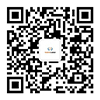Although the Philippines has maintained a subtle relationship with China in recent years, its economic relationships have been closely related. In the past 5 years, China's exported goods to the Philippines have maintained about 20%. China's main exported goods are electronic appliances, machinery and equipment, steel, and steel, and steel, steel, and steel, and steel, steel, and steel, and steel, and steel, steel, and steel, and steel, steel, and steel, and steel, steel, and steel, and steel, steel, and steel, and steel, steel, and steel, and steel, steel, and steel. Knitting products, etc., the total value of goods exported to the Philippines in 2013 reached about 20 billion US dollars.
There are many ports in the Philippines, and the main ports are: Manila, CEBU, and Davao. The shipping from Shenzhen to the port of Manila is directly obtained, about 4 days.
The Philippine Customs Policy In order to better evaluate the number, quality, native country and other information of the imported products, in May 2014, the Philippine Customs issued the Manila 1099 instructions. The inspection of bulk goods and cabinet products is called Loading Port Survey Report, referred to as LPSR for short.
Philippine certification:
1. Submit product documents (invoices, box orders) and test reports that meet the requirements
2. Arrange on -site inspection
3. Qualified inspection and delivery notice can be arranged for delivery
4. Provide a bill of lading scanning. Generally, 3-5 working days will issue a certificate
Import tariffs
The Philippines' import tariffs are collected from quantitative, and part of the price is levied from the price. Products collected from quantitative tariffs include: alcoholic beverages, fireworks and firecrackers, tobacco products, watches, minerals, cartoon, sugar, poker, etc. The range of tariff rates from price tariffs is 10-100%, and the price of the material is standard, which involves a large range of goods. The Philippines established a system on January 1, 1998 with a tax rate of 10%. Agricultural products, seafood, fertilizers, agricultural flowers and herbicides, some oil products, some books and paper imports are exempted from certain expenses.
The Philippines also levies documents related costs. The tax is generally used for pick -up forms, pick -up orders, bills, other trading orders, insurance policies, mortgage deeds, attorney and other documents. The value of all formal import invoices is more than 5000 pesos, and the import fee is 250 pesos. This cost will be handed over to the authorized bank by the importer or client. For the Philippines Customs to one of the following situations, it is exempt from import tariffs:
1. Printing materials, pictures, portraits, labels, directory books, price books, small books, etc., but the words "samples or advertising materials that are not for sale" must be marked; samples with commercial value, but value must not exceed 1500 1500 US dollars; samples that are not used to sell or have no commercial value, as well as medical samples with the words "health care". Products that require import permits are car, tractors, cars, diesel engines, gasoline engines, motorcycles, durable consumer goods, news and printing equipment, cement, and health -related products related to public security. For restricted imported goods, the central bank is approved by the central bank in advance, because such products are not basic products. All such products are divided into two categories: non-basic consumer goods and unclassified consumer Goods To.


